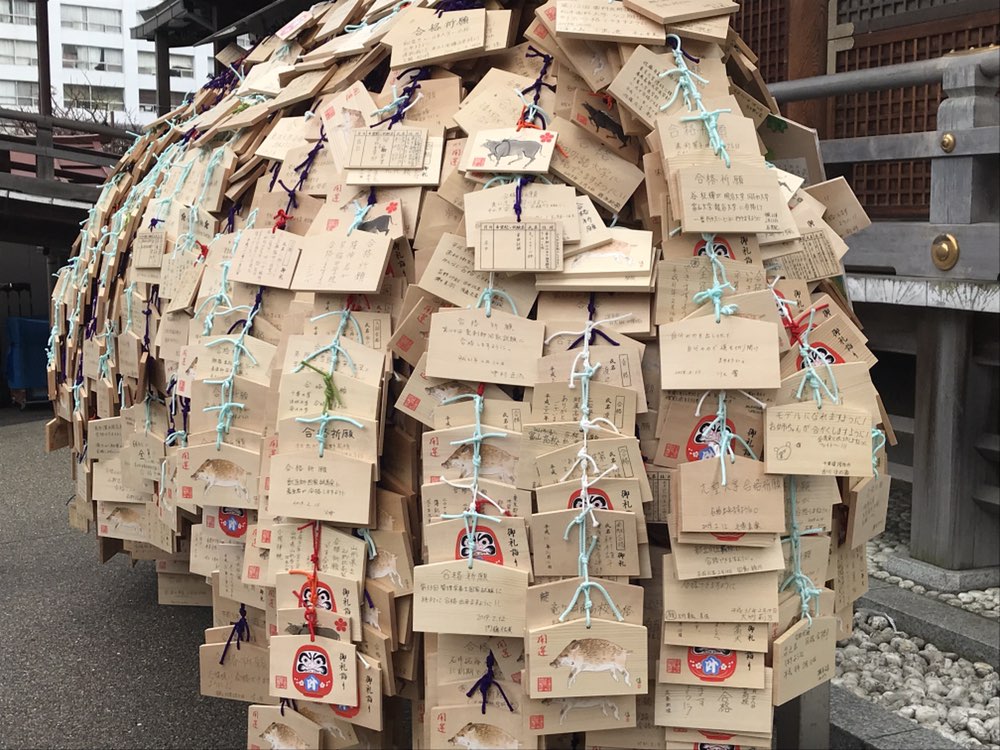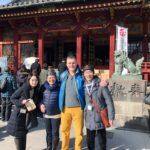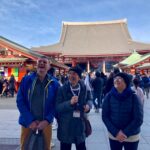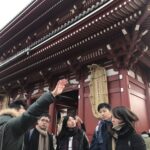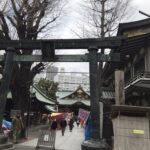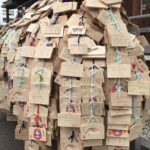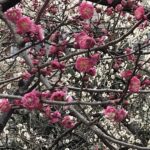It was a freezing cold cloudy day. But we welcomed 11 guests in total from Australia, Singapore, Thailand, UK & USA. Thank YOU very much for your participation to our bi-weekly Sunday Asakusa route tour. It is always amazing that we have guests from such various countries & regions.
Lots of tourist interests are packed in Asakusa. One example is that you can visit both Shinto shrine and Buddhism temple in short distance. In fact, they locate side by side.
Shinto (“the way of the deities”) is an indigenous religion of Japan as old as Japan itself. It remains Japan’s major religion alongside Buddhism.
Shinto is deeply rooted in the Japanese people and traditions.
“Shinto deities” are called kami. They are sacred spirits which take the form of concepts and things important to life, such as mountains, rivers, trees, wind, rain, thunder and fertility. Even human become kami after passing away. The kami of extraordinary people are enshrined at some shrines.
An interesting aspect of Shinto shrine is that they have a specific role expected according to the deity enshrined. For example, the Inari enshrines the god of good harvests, and so people visits there pray for their success in business.
Yushima Tenjin Shrine, easily accessible from Asakusa and Ueno, is a Shinto shrine devoted to Sugawara no Michizane, a famous 9th century scholar also known as the God of scholarship.
In Japan, school term starts in April and closes in March. Mid-February to early March is the peak season of entrance examination. During examination season, don’t be surprised to find many students and their family coming to the shrine to pray for good results. In addition to pray in front of main hall, many visitors purchase “ema” small wooden votive tablets. Visitors write down their petition, i.e. success in examination and hang them on special racks in front of the main hall. Currently all the ema racks have huge bundles of ema. Wow, it should be a tough work for even Tenjin deity to fulfill all the desires.
Yushima Shrine is also famous for the Japanese apricot blossoms (ume), It has a blossom festival from mid-February to mid-March, when the flowers on 300 Japanese apricot trees in full bloom – what a breathtaking sight!

